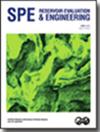使用油藏模拟和物理信息机器学习技术的Volve油田数据驱动的降阶模型
IF 1.5
4区 工程技术
Q3 ENERGY & FUELS
引用次数: 2
摘要
储层模拟是预测和表征地下过程的行业标准。然而,大网格块计数模拟计算成本高,耗时长。本研究探索数据驱动的降阶模型(rom)作为详细的基于物理的模拟的替代方案。使用神经网络(nn)的rom可以有效地捕获非线性依赖关系,并且只需要可用的操作数据作为输入。神经网络通常被标记为难以解释的黑箱工具。另一方面,物理信息神经网络(pinn)为这些缺点提供了一个潜在的解决方案,但它们尚未在石油工程中得到广泛应用。在本研究中,利用沃尔沃公开数据发布的黑油油藏模拟模型,利用长短期记忆(LSTM)神经网络的时间建模能力,为ROM生成训练数据。探讨了网络配置的最优配置。在单井和全油田水平上预测每月产油量,然后与实际油田生产历史数据进行验证,将其预测精度与模拟结果进行比较。然后将电容电阻模型(CRM)的控制方程作为基于物理的约束添加到水库尺度的神经网络模型中,并分析流场表征有效性的参数解。数据驱动的ROM结果表明,以单一时间滞后作为输入的无状态LSTM产生了最准确的预测。采用前向验证策略,与油藏模拟相比,单井ROM的预测精度平均提高了约95%,并且在短时间内使用了更少的计算资源。通过添加CRM约束,油藏规模预测的物理真实性得到了提高,这可以通过消除负流量来证明。控制方程的参数解与现场尺度流线图吻合较好,显示了ROM检测空间不规则性的能力。这些结果清楚地表明,通过油藏模拟,rom可以很容易地构建和使用,以满足或超过某些时程生产数据的预测能力。本文章由计算机程序翻译,如有差异,请以英文原文为准。
Data-Driven Reduced-Order Models for Volve Field Using Reservoir Simulation and Physics-Informed Machine Learning Techniques
Reservoir simulation is the industry standard for prediction and characterization of processes in the subsurface. However, large gridblock counts simulation is computationally expensive and time-consuming. This study explores data-driven reduced-order models (ROMs) as an alternative to detailed physics-based simulations. ROMs that use neural networks (NNs) effectively capture nonlinear dependencies and only require available operational data as inputs. NNs are usually labeled black-box tools that are difficult to interpret. On the other hand, physics-informed NNs (PINNs) provide a potential solution to these shortcomings, but they have not yet been applied extensively in petroleum engineering.
In this study, a black-oil reservoir simulation model from Volve public data release was used to generate training data for an ROM leveraging long short-term memory (LSTM) NNs’ temporal modeling capacity. Network configurations were explored for their optimal configuration. Monthly oil production was forecast at the individual wells and full-field levels, and then validated against real field data for production history to compare its predictive accuracy against the simulation results. The governing equations for a capacitance resistance model (CRM) were then added to the reservoir-scale NN model as a physics-based constraint and to analyze parameter solutions for efficacy in characterization of the flow field.
Data-driven ROM results indicated that a stateless LSTM, with single time lag as input, generated the most accurate predictions. Using a walk-forward validation strategy, the single well ROM increased prediction accuracy by about 95% average when compared with the reservoir simulation and did so with much less computational resources in short time duration. Physical realism of reservoir-scale predictions was improved by the addition of CRM constraint, demonstrated by the removal of negative flow rates. Parameter solutions to the governing equation showed good agreement with the field-scale streamline plots and demonstrated the ROM ability to detect spatial irregularities. These results clearly demonstrate the ease with which ROMs can be built and used to meet or exceed the predictive capabilities of certain time-history production data using the reservoir simulation.
求助全文
通过发布文献求助,成功后即可免费获取论文全文。
去求助
来源期刊
CiteScore
5.30
自引率
0.00%
发文量
68
审稿时长
12 months
期刊介绍:
Covers the application of a wide range of topics, including reservoir characterization, geology and geophysics, core analysis, well logging, well testing, reservoir management, enhanced oil recovery, fluid mechanics, performance prediction, reservoir simulation, digital energy, uncertainty/risk assessment, information management, resource and reserve evaluation, portfolio/asset management, project valuation, and petroleum economics.

 求助内容:
求助内容: 应助结果提醒方式:
应助结果提醒方式:


